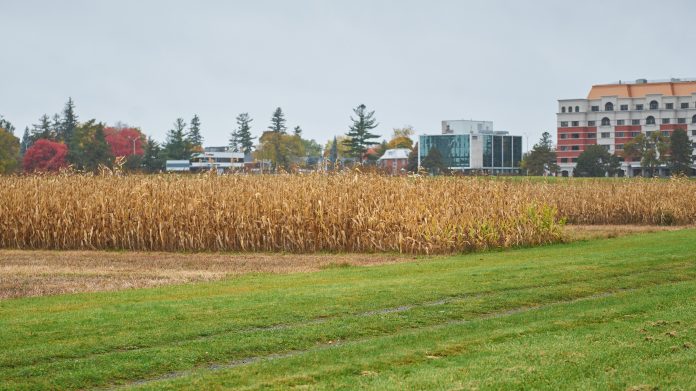By Gabrielle Huston
Ottawa’s Central Experimental Farm (CEF) keeps food on your table and ensures you don’t get sick after you eat it.
If you’re familiar with the CEF, it might be because of the agricultural museum on the land or family-friendly activities hosted there. You might have also heard that two new apartment buildings are threatening CEF research.
According to Matthew Linsdell, the CEF greenhouse supervisor, some people think that the staff just play with goats all day. Plenty of people are genuinely interested in the research, though. Linsdell sees the best reactions on tours, where the guests can handle the crops themselves.
“People start to appreciate what we are doing. They take it for granted because they can buy food easily. Having that face-to-face interaction, though, really does change things,” he said. “We can grow corn in pots in the greenhouse and seeing that – from a small pot, you can grow an eight-foot corn plant – that kind of blows their minds.”
How will shadows impact research at the Central Experimental Farm?
To understand why the shadows of two apartment buildings can so drastically affect CEF research, you have to understand the kind of long-term work that happens there to put food on Canadian tables.
Wheat is one critical example. The research takes decades, and wheat is in so many of the products we, and our animals, eat every day.
Dr. Andrew Burt is part of a network of Canadian wheat breeders; there are only six across the country.
“Variety production in wheat, but in every crop, is a continuous process,” Dr. Burt said. “We’re always releasing new varieties. They get taken up by growers or not, but we’re on this continual process, continually striving to increase productivity, improve quality, address emerging problems, whether they’re diseases or pests, or addressing new market requirements.”
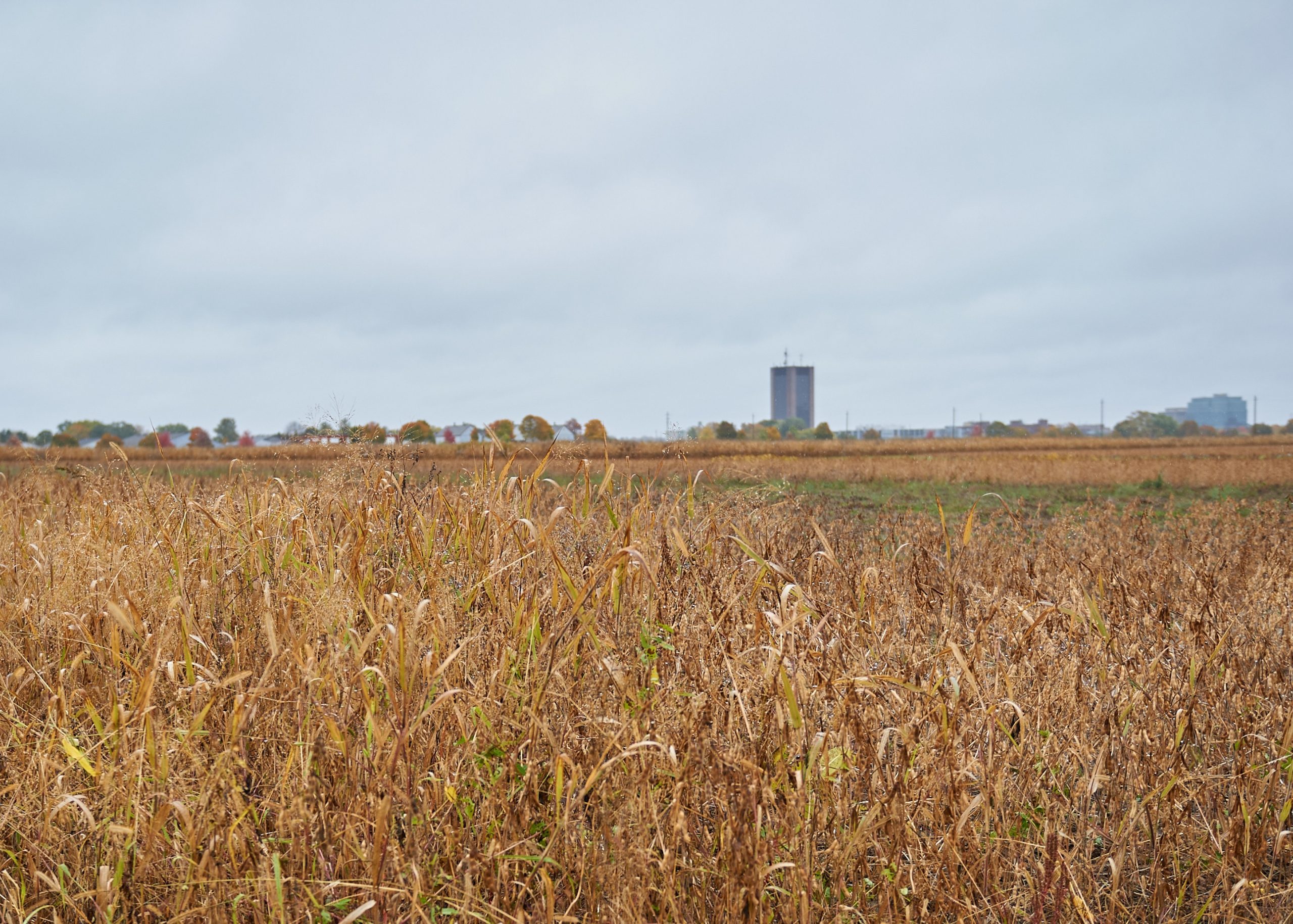
Though this kind of research happens all over the world, Canadian research is necessary to prepare the crops for our harsh environments.
Some people expect it to be an easy process by now. Dr. Elizabeth Brauer, a research scientist focused on the genetic improvement of cereal crops, had a student once ask: “With synthetic biology, isn’t everything solved?”
“Wouldn’t that be nice?” Dr. Brauer said, chuckling. “It’s never quite that easy, unfortunately. But I think the perception is, with the advanced science that we have now in genomics, and all these tools, is that we should be able to just sort of get it done. But it does take a lot of time and effort.”
For example, one variety of wheat, from start to end, takes about 15 years to fully develop, according to winter wheat breeder Dr. Gavin Humphreys.
There are extensive facilities set up at the CEF for the kind of long, thorough work that needs to be done. To supplement the fields for long-term research, the CEF also hosts large greenhouses. They, too, would be affected by the shading of those apartment buildings. The greenhouses are divided into subsections that can be independently climate controlled for a particular crop’s needs.
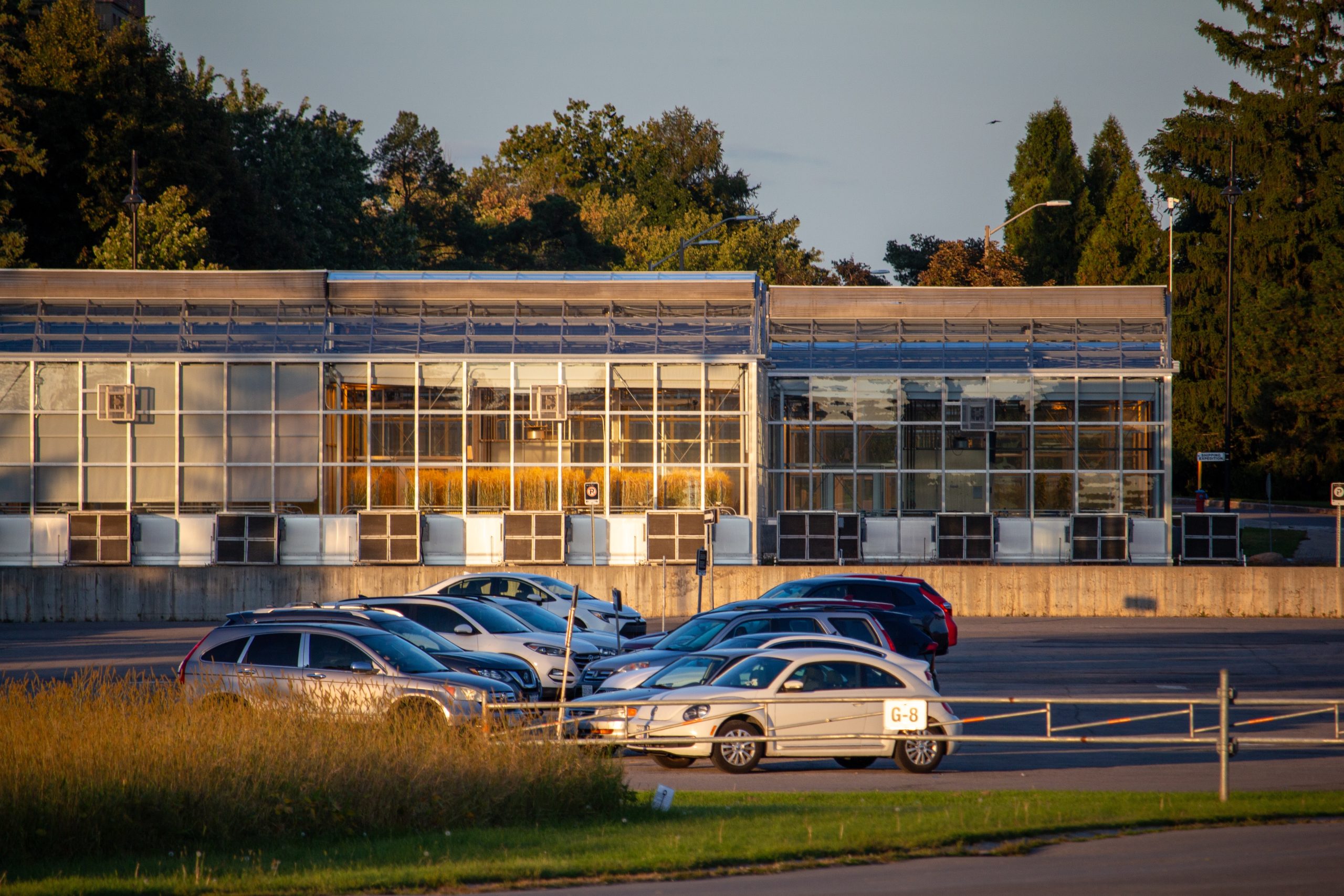
In addition, there is an extensive indoor container farm where researchers can rent space. Dedicated greenhouse staff adhere to the scientists’ watering and care instructions. Some plants need to be handled cautiously to avoid cross contamination; these are the ones being used to study disease.
This is the other side of the coin, where the CEF not only creates the varieties you eat but also keeps the food you eat safe to eat. It takes lots of different forms.
“When we import and export commodities, we have to make sure that we’re not importing pests or sending pests to other countries,” Associate Director of Science and Technology Julie Chapados said.
The scientists at the CEF can preemptively study pathogens, and the Canadian Food Inspection Agency or the Border Services can send up unknown pathogens for identification. Until it is identified, the shipment has to be held.
Chapados said that this work is supported by specialist teams, like mechanics and field crews, as well as the CEF’s collections.
“We host some of the largest Canadian collections,” Chapados said. ”We have an insect collection that has over 17 million specimens – it’s one of the top in the world. We have a herbarium forof fungi and one forof plants. We also have a living collection of fungal cultures. So this acts as a repository for all the biodiversity that’s there.”
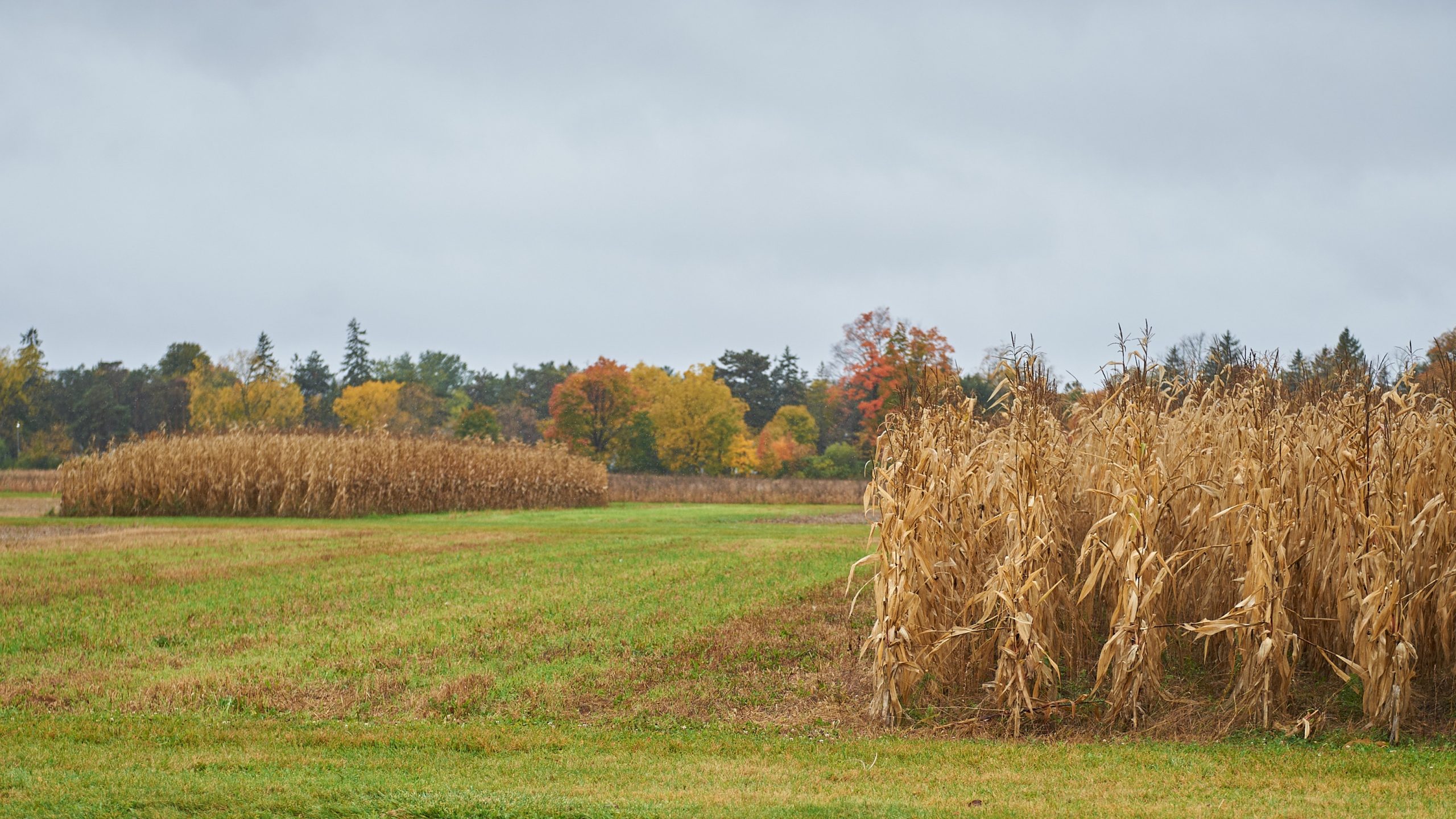
In the fields, breeders can also test strains of their crop to see how resistant it is to certain pathogens. Fusarium Head Blight (FHB), for example, is a fungal disease that Dr. Burt and his team are trying to fight off.
“It reduces a farmer’s productivity, but, if it entered the food market — well, it can’t enter the food market,” said Dr. Burt. “It produces toxins that are toxic to people and animals. So one of the things that we do [on the CEF] is run a FHB screening nursery for all of Agriculture Canada’s material to ensure that the varieties we’re releasing meet a very high standard of resistance to this disease.”
In a small field, Dr. Burt is growing around 3,000 different genetic lines to test their resistance to FHB.
The CEF performs lifesaving work. They aren’t resuscitating people on the beach or climbing into burning buildings, but Canadians would not be enjoying the food on their tables without these scientists.
“All of us researchers, I think we take the idea of public service as pretty intrinsic to what we’re doing,” Dr. Burt said. “We get to work in a field where we get to do research that we’re interested in, but part of the satisfaction of it as a career, too, is the public good of what we’re doing, supporting Canadians by supporting Canadian farmers. It’s one of those research areas where, sure, the timelines are long, but we’re working along every step of the way. We get to see our output hopefully getting taken up: impacting growers, making it to grocery store shelves and people’s breakfast tables, and supporting the sourdough pastimes of Canadians.”
When research takes this long and is this essential to, in Dr. Burt’s words, the public good, two apartment buildings’ shadows become a lot more serious.
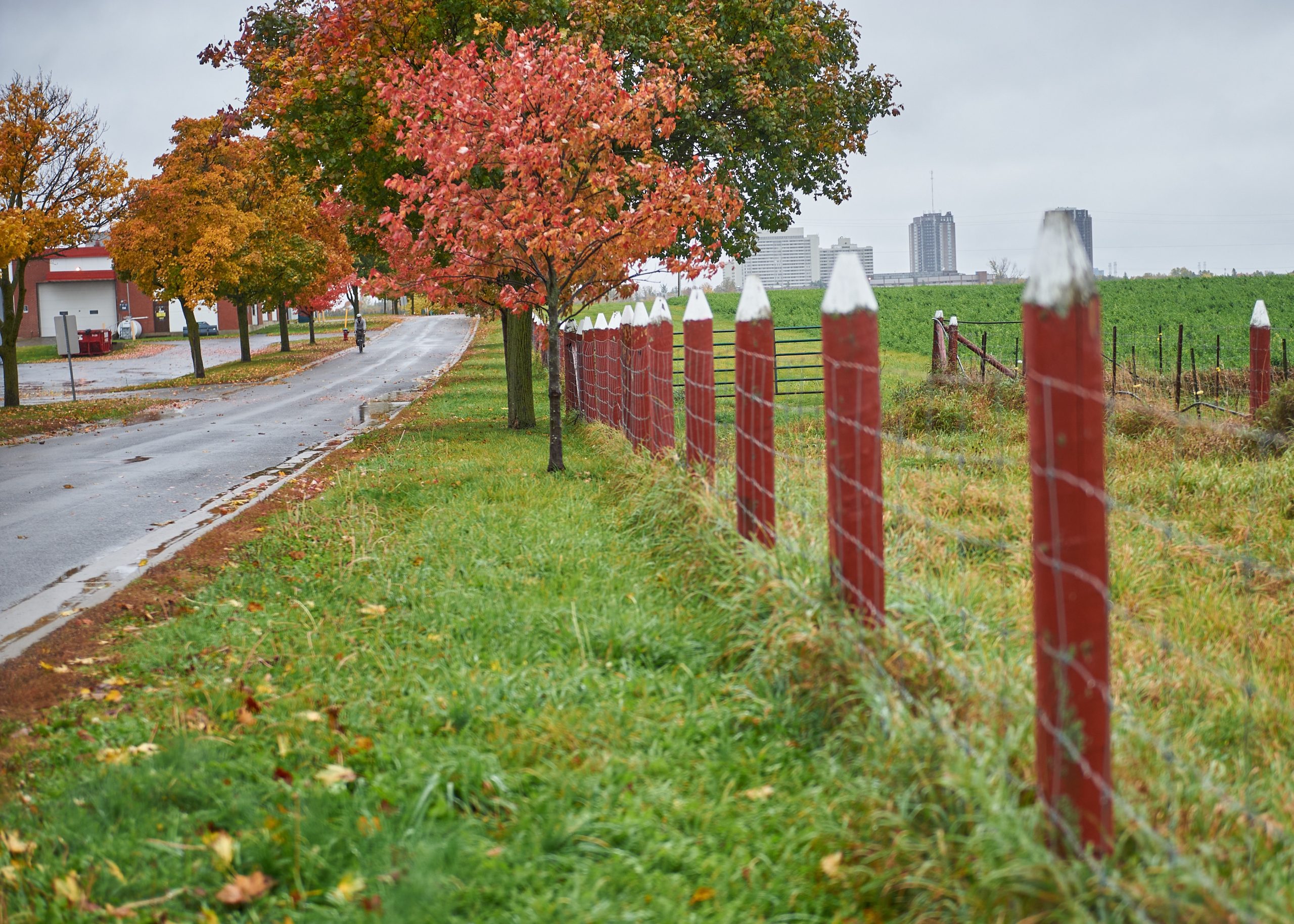
These new towers, built by Taggart Realty Management, will be across the road from the CEF. Though they aren’t on CEF property, the long shadows will spread across the fields. The CEF researchers are trying to recreate conditions for the average farmer, but the average farmer wouldn’t have a skyscraper’s shadow on their field all day. Even worse, the shadow is being cast on land that CEF has been using for more than 30 years.
“As you build up the number of years of research, you can actually use that research and data to predict for the future,” said Steve Thomas, a breeding assistant and research and development technician.
“They are looking at the effect of crop rotation on soil organisms and pests and all other things,” Linsdell explained, “and they interplay with climate change. So when you cut one third, you are losing that much data. Building the new one, it won’t replace what you missed. And you don’t have that crop rotation information for the past so-many years [to make predictions with].”
The Deputy Minister of Agriculture and Agri-food Canada, Stefanie Beck, raised concerns about the “significant cost and enduring impacts” of the development on the CEF. The Civic Hospital Neighbourhood Association also opposed the proposal, citing the shade’s effect on research and “Ottawa’s New Official Plan requirements for ensuring appropriate transition to an abutting community.”
Despite these objections, plans for the towers were approved twice by Ottawa’s planning committee.
